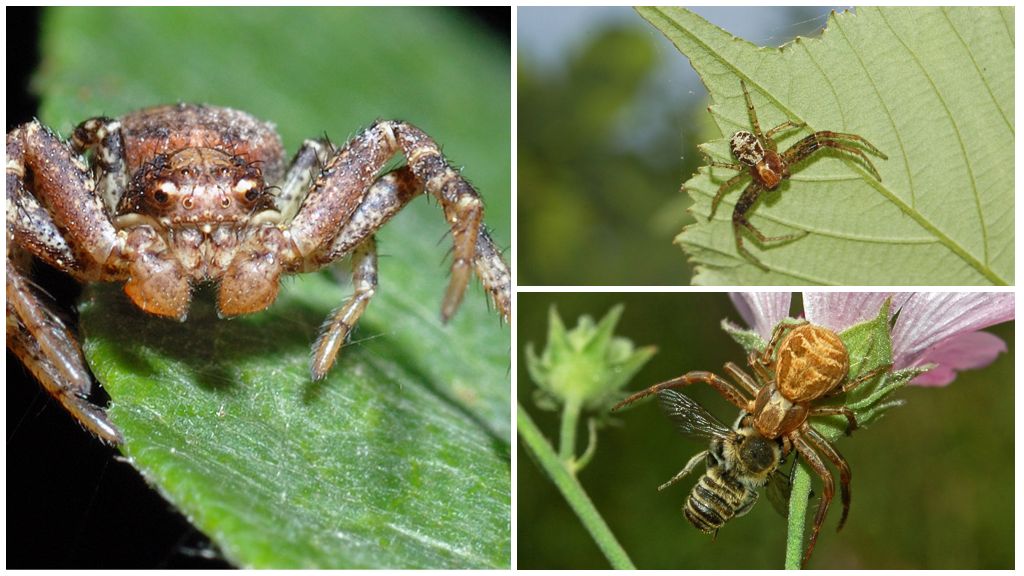Description and photo of crab spider (non-isometric bokhoda)
The spider is a bokhod, it is an unequal bokhod, the crab (lat. Thomisidae) has one feature - walking sideways. Hence the name. Externally resembles a crab, thanks to the modified forelimbs. The animal spends most of its life on flowers, waiting for the victim.
Appearance Description
Around the world lives 170 genera, more than 2,000 species of bokhodov. They differ from other relatives with their front limbs. Two pairs of front legs are much longer than the others, turned upwards. Remind the claws of the crab.Thanks to this feature, the spider can walk sideways in different directions.
Females reach a size of 1.2 cm, males are half smaller. Color is very different - green, pink, yellow, white, red, brown. Most bright species live in flower buds, merging to match the petals. The crab is brown, dark and lives in the bark of trees and forest litter. Photo bokhoda spider is located below.
Behavior features
Spider crab does not weave trapping nets, does not construct a web in front of the shelter. It uses cobwebs only to move to the lower leaves, long distances. The female forms the cocoon sacs in which she lays the eggs.
Interesting!
Unequal bokohody use the web as a vehicle. Weave bags, sit on top, go down, dangling in the air, waiting for a gust of wind. In the autumn, females travel several kilometers from their past habitat in this way. To stop, the spider drops a cobweb, clings to the leaves of trees, a plant.
The spider crab yellow, green, red, pink spends most of its life on flowers, quietly waiting for the victim.At the sight of a butterfly, a fly, the caterpillar takes a stand with its legs spread wide. Standing motionless, waiting for the right moment. Instantly rushes to the victim, bites, injects a toxic substance. After a few minutes, start the meal.
Breeding
The marriage period begins in June. Males care for females, mating occurs. The spider weaves a cocoon from a web, fastens to a reverse side of a leaf, lays eggs. In one clutch there may be several hundred. Before the appearance of offspring, the bokhod protects the larvae, and for some time after the birth of the young, protects them from enemies and extracts food. The lifespan of an adult individual is not more than a year.
Danger to humans
The bokhod's spider venom is extremely toxic, but only for potential victims. Small rodents - mice, hamsters, guinea pigs can feel the pain. For humans, the dose of a toxic substance is extremely small. Crabs do not attack people, try to hide themselves quickly, so as not to suffer. Even if a bokhoda spider bite follows, it will be inconspicuous.






